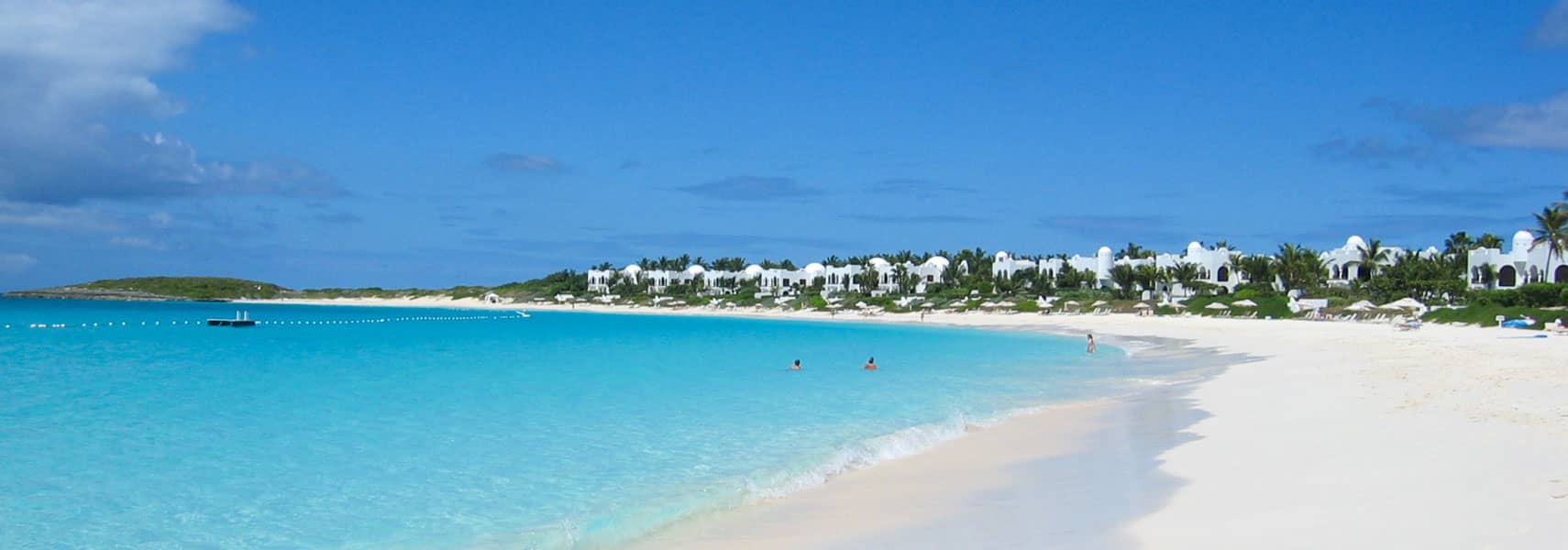Discover the Allure of Anguilla
Anguilla, a captivating jewel nestled in the British West Indies, beckons travelers with its stunning landscapes and rich cultural heritage. This enchanting island, part of the Lesser Antilles, lies approximately 270 kilometers east of Puerto Rico and just north of the alluring Saint Martin. As the northernmost of the Leeward Islands, Anguilla features not only spectacular beaches but also shares maritime borders with Antigua and Barbuda and the U.S. Virgin Islands, making it an ideal spot for a Caribbean getaway.
A Glimpse into Anguilla's History
Initially inhabited by the Arawak and Carib peoples, Anguilla saw the arrival of English settlers in 1650, marking its transformation into a British colony. Over the years, the island has witnessed a rich blend of cultures, primarily influenced by its African ancestry. Interestingly, Anguilla became a self-governing dependency of the United Kingdom after briefly joining with St. Kitts and Nevis in 1967. Today, Anguilla holds a special place in the Caribbean as a territory that balances its historical roots with modern governance.
Geography and Climate of Anguilla
Spanning an area of 91 square kilometers, Anguilla stands out as a flat limestone and coral island, boasting only a few rolling hills. Remarkably, this size makes it slightly larger than half of Liechtenstein, or about the same size as Washington, D.C. Its geographic location undoubtedly enhances its appeal; Anguilla lies in the Eastern Caribbean, seamlessly connected to major international gateways like St. Maarten. With a tropical climate moderated by trade winds, Anguilla enjoys warm weather year-round, perfect for beach lovers and adventure seekers alike.
Government Structure in Anguilla
Anguilla functions as an internally self-governing British overseas territory. The head of state, Her Majesty Queen Elizabeth II, is represented on the island by the Governor. The local government actively engages its citizens in decision-making processes, underscoring a commitment to building a vibrant community. Residents take pride in their self-governing status, which allows them to maintain cultural traditions while embracing modern advancements.
The Heart and Soul of Anguilla's People
With a population estimated at around 16,700 as of 2016, the people of Anguilla, known as Anguillans, form a close-knit community. The demographic composition is predominantly of African descent, with 90.1% identifying as black and 4.6% as mulatto. Christianity plays a significant role in the cultural fabric of Anguillian life, guiding social actions and community ties. Officially, the English language prevails, fostering clear communication among locals and visitors alike. A remarkable literacy rate of 92% illustrates the emphasis placed on education in this vibrant society.
Natural Resources and Economic Landscape
Anguilla's economy thrives on its abundant natural resources. Salt, fish, and lobster serve as critical components of the island's commercial landscape. Moreover, the agriculture sector produces tobacco and various vegetables, while cattle raising contributes to the local economy. Tourism stands as the cornerstone of economic activity, generating substantial revenue and creating employment opportunities for residents. Boat building and offshore financial services also play vital roles in diversifying Anguilla’s economic portfolio.
Exports and Trade Partners of Anguilla
Anguilla exports an array of commodities including lobster, fish, livestock, salt, concrete blocks, and rum. The primary trading partners for these exports include the United Kingdom, the USA, and Puerto Rico. In return, the island imports essential goods such as fuels, foodstuffs, manufactured items, chemicals, trucks, and textiles. This dynamic exchange fosters economic stability and fortifies relationships with neighboring regions, enhancing the island’s position in the Caribbean market.
Experience the Beauty of Anguilla
Anguilla, renowned for its pristine beaches and crystal-clear waters, attracts visitors from across the globe. From the famous Shoal Bay to the tranquil Little Bay, each beach offers unique experiences. Enthusiasts can indulge in water sports, while those seeking relaxation can bask in the sun on the powdery sands. Anguilla’s vibrant coral reefs present excellent opportunities for snorkeling and diving adventures, showcasing the island’s rich marine biodiversity.
The Culture and Cuisine of Anguilla
Cultural events and festivals throughout the year celebrate Anguilla's heritage and traditions. Moreover, the island's cuisine reflects a fusion of flavors, blending local ingredients with international influences. Seafood, particularly fresh lobster and conch, often takes center stage on dining tables. Travelers should not miss the chance to savor local delicacies at beachside shacks and upscale restaurants, where hospitality continues to be a hallmark of Anguillian culture.
A Warm Welcome Awaits in Anguilla
Visitors to Anguilla often remark on the warmth and friendliness of its people. The local community takes pride in showcasing their island's beauty, ensuring that every guest feels at home. Engaging with residents offers travelers insights into the rich cultural tapestry of Anguilla, further enhancing their stay. Whether exploring hidden coves or enjoying local festivals, every encounter adds a unique element to the overall experience.
Conclusion: Embrace the Magic of Anguilla
Anguilla offers a captivating blend of history, natural beauty, and vibrant culture. Its unique geographical positioning and commitment to preserving its heritage distinguish it within the Caribbean landscape. This island paradise, illuminated by warm hospitality and stunning scenery, invites all to discover its wonders. Whether you seek adventure, relaxation, or cultural enrichment, Anguilla promises an unforgettable escape filled with cherished memories.
Largest cities of: Anguilla
| City Name | Population | Year of foundation | |
| The Valley | 1,500 | 1967 | |
| East End | 700 | 1967 | |
| West End | 300 | 1967 | |
| Blowing Point | 200 | 1983 | |
| Sandy Ground | 150 | 1967 | |
| South Hill | 100 | 1967 | |
| Pond #1 | 50 | 1650 | |
| Pond #2 | 30 | 1650 |


